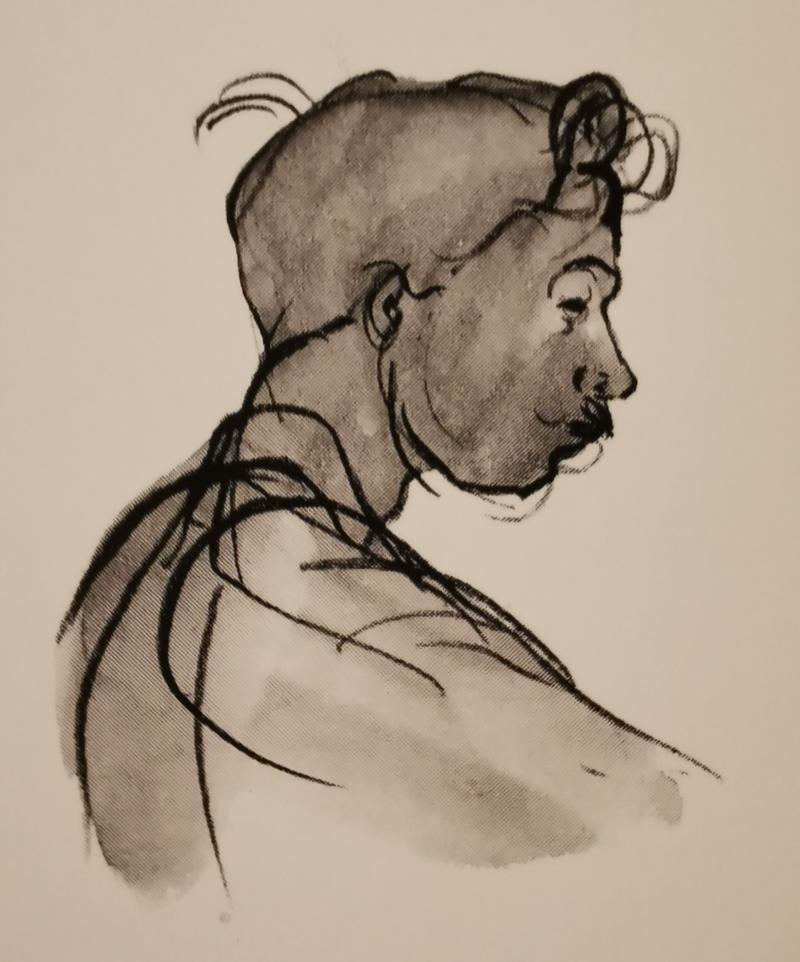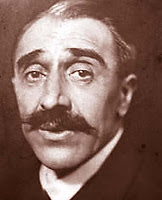<Back to Index>
- Designer Henri Auguste Doucet, 1883
- Biographer and Translator Léon Bazalgette, 1873
PAGE SPONSOR

Henri Auguste Doucet (Pleumartin, 16 December 1883 - 11 March 1915) was a French cartoonist and painter.
Henri Doucet came from a family of workers and peasants. He worked early on as a house painter. Talented in drawing, he participated in the design of the pavilions of the Paris Exposition in 1900. Attending the public gallery of the École des Beaux - Arts where he drew, he was noticed by the painter Gérôme, who admitted him in his studio. To regularize his situation, he had to pass the entrance exam for the school. His second place earned him a scholarship from the city of Chatellerault .
Along with his studies, he worked with Jean - Paul Laurens and Henry Martin, including working to decorate the Capitole de Toulouse.
At the end of his Fine Arts studies, he made a study trip to Italy. Returning to Paris in 1907, he joined the group of l'Abbey de Créteil, a community of artists founded by Georges Duhamel and Charles Vildrac. He exhibited his works, including landscapes of Venice. He also painted a portrait of his friends, including Duhamel and Vildrac. After the dispersion of the group of the Abbey, he moved to Paris with painters Albert Gleizes and Maurice Douard and sculptor Geo in a hotel located in No. 7 of Delta Street. This hotel, half in ruins, was rented by Dr. Paul Alexander, who decided to found a new colony of artists. Henri Doucet introduced Modigliani to Dr. Alexander, who became his first patron. This adventure of Delta lasted until 1911.
During the summer of 1913, he made a second trip to Italy with his friend Charles Vildrac. He moved to Villeneuve - lès - Avignon . But when the war began in 1914, and although he was not mobilized, he decided to enlist. He was killed at Hooge, near the Yser, on 4 or 5 March 1915.

Leon Bazalgette (8 May 1873 - 31 December 1928) was a French biographer and translator.
In 1905, through Emile Verhaeren, he made the acquaintance of Stefan Zweig. In The World of Yesterday Zweig reflected on their long friendship
"It is only in spiritual friendship with the living that one senses the true relationship between the people and the country, all that is seen from the outside being inaccurate and shallow. Such friendships were granted me, and best of all with Leon Bazajgette. "
Bazalgette has "the gift of friendship, a sense of camaraderie that would extend to all mankind."
"What was extraordinary in Leon Bazalgette, a friend from my friends, whose name is most unjustly forgotten in most contemporary accounts of French literature, is that in the midst of this extraordinary generation of poets, he put all his creative effort in service to foreign works, reserving all the wonderful intensity of his personality to those he loved. In him, a "comrade" was born, I got to know a man ready to make any sacrifice, truly dedicated, which considers the unique task of his life to advance his core values, devotes time to perform his work and does not care about being praised for having discovered and promoted. His enthusiasm was only an active natural function of his moral conscience. In appearance a little soldier, even ardent militarist, he put in his trade the warmth of a true friend. [...] The time did not matter to him, the money did not matter to him when he was among friends, and he had friends in the world, a small but well chosen group".
Leon Bazalgette attended the Abbaye de Créteil, a community of artists founded by Georges Duhamel and Charles Vildrac.
In 1908, Léon Bazalgette published a biography of Walt Whitman: Whitman, the man and his work. And in 1909 he published a translation of Leaves of grass (Leaves of Grass), a major work of the American poet that he helped make known in France.